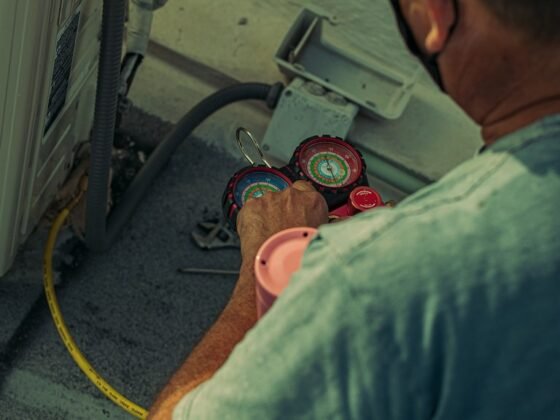Table of Contents Show
How lovely is it to have a personal paradise in your room where you can unwind and be surrounded by soothing mindfulness to improve your mental well-being while escaping the stresses of everyday life? But where does a beginner start when it comes to mindful meditation room ideas? The good news is that you don’t have to worry about it.
This article has quick and inspiring tips covering vital meditation room ideas so you can easily practice yoga, chants, and meditation without interruption to help you create a unique area that enables you to recharge your body physically and mentally and keeps you balanced.
However, you must note that no specific rules need to be followed when creating a meditation room.

You can transform your room into a relaxing haven for meditation according to your preference, especially if you’re planning to add healing crystals. Like the benefits of purple gemstones would be amplified when placed at the right spot.
But if you are looking for tips on how people transformed their ordinary room into a meditation room, then this article is for you. Here are eight simple ways on how to have a meditation space in your room.
1. Remove Other Things in Your Room to Create Space
If you have a lot of things in your room, you might consider removing them. You can’t meditate in your room if you have a lot of unnecessary tools and equipment that might disrupt your meditation.
But if your room is quite spacious, all you have to do is to choose a space in your room where you can transform it into a meditation area.
2. Add the Necessary Equipment You Need for Meditation
While many people are skeptical of meditation’s transformational abilities, there’s no doubting the life-enhancing benefits of having your retreat.
And since all you need to create your zen zone is a quiet area, a simple pillow, and a yoga mat, you won’t be tempted to go all out.
After all, the point of meditative practice is to help you benefit from a little quiet tranquility now and then.
3. Choose a Relaxing Scent
Another thing to consider in your meditation space is aromatherapy. Lavender, chamomile, and peppermint are examples of plant-based essential oils that may assist in relaxing the spirit, mind, and body.
When meditating, aromatherapy may be utilized in a variety of ways, from burning candles and incense to heating oils. Aromatherapy provides a number of benefits in addition to helping you relax.
This type of therapy is gaining popularity and is on its way to becoming a widely used healing tool that is thought to improve brain function.
According to research, it also enhances the immune system, relieves muscle discomfort, and decreases or eliminates stress. These are all excellent reasons to incorporate aromatherapy into your meditation space.
4. Make your Room Colorful
Let’s talk about using modest doses of color into your meditation room ideas to maintain the space peaceful and collected before we go into wall paint colors.
Though you want your area to be minimalist, consider adding small decorative items that can be switched from season to season for a quick room refresh. Consider removing everything but a few important decorative pieces from the room.
A small table, yoga mats, a plush throw rug, and meditation pillows are just a few of the essentials. Color affects your mood regardless of your choice, so choose colors that appeal to your meditation requirements and help you feel peaceful and calm.
5. Let Nature Add Serenity to Your Room
Nature is naturally relaxing and therapeutic; therefore, it stands to reason that you incorporate some natural components into the space where you want to relax and meditate.
In truth, most people feel that meditation is all about integrating your mind and body with nature and your surroundings.
While it would be great to meditate outside in a peaceful, natural setting, this is not always practical if you live in a busy city. Consider incorporating natural elements into your meditation space to imbue it with harmony and balance.
You are free to use whatever natural ingredients you like. Even a little water fountain or a flower might be used as a centerpiece for a table.
In fact, every meditation room should have an indoor tabletop water fountain. A tabletop water fountain will provide similar relaxing noises if you can’t meditate on the beach while listening to the changing ocean tides.
6. Invite Natural Light in
Since nothing surpasses the benefits of natural light, while brainstorming meditation room ideas for your home, choose an excellent light-filled place outfitted with sheer window curtains.
If your designated meditation room lacks light, consider alternative light sources such as fixtures that reflect your aesthetic style and have dimming choices.
In addition, if your area is outside, choose a durable umbrella or garden tent structure to block away distracting sunshine.
7. The Essence of Meditation is Comfort Before Style
Comfort should be king when it comes to transforming any space into a meditation area since this space should be reserved for the most harmonizing effect of them all. As the space demands a relaxed atmosphere, avoid sacrificing comfort for style.
For the ultimate in time-worn treasures that get better with age and are far from excessively precious, go for tried-and-true pieces with a lived-in vibe, as this is one room that needs to feel entirely peaceful and distant from the everyday craziness of the world outside.
8. Download Some Meditative Music
Though this is not required, music can be incredibly calming for many people. This is especially useful for those who live in a bustling city, where the sounds of traffic, trains, and sirens are continuously heard through the walls.
Although quietly played in the background, meditation music can help drown out all other distractions within the home, allowing you to achieve a tranquil and peaceful mood when meditating, similar to the sound of the water fountain.
It is recommended that you choose songs without vocals when listening to music for meditation. It does not have to be classical music, but any noises that you find relaxing, such as ocean sounds, birds tweeting, or wind whistling.
Make sure the sounds are lengthy enough to last the duration of your meditation session and consider putting them on repeat to avoid interruptions.
When designing a meditation room, there are numerous factors to consider. Choose a peaceful location to eliminate distracting noises and incorporate natural elements to provide an appropriate starting point. Start searching about your house with what you’ve learned here.









